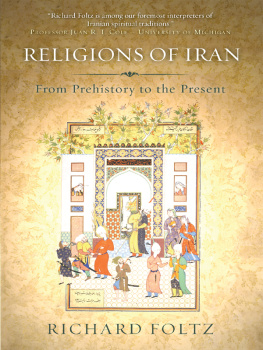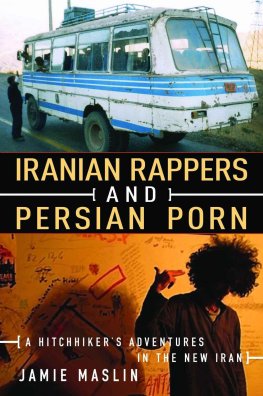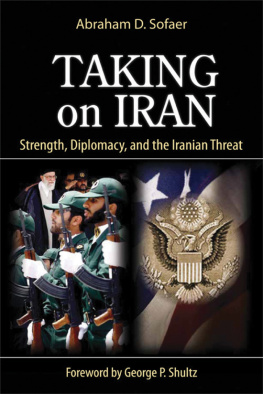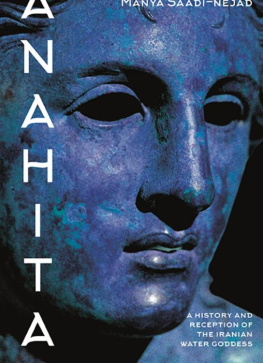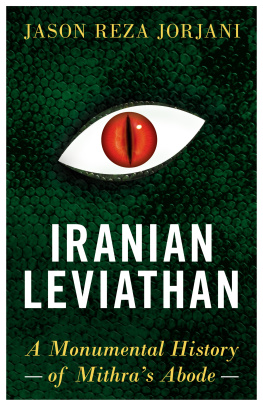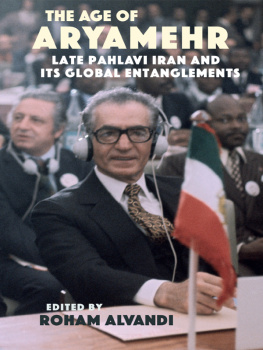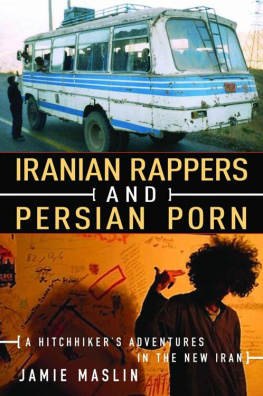RELIGIONS OF IRAN
from prehistory to the present
RELIGIONS OF IRAN
from prehistory to the present
Richard Foltz
A Oneworld book
Published by Oneworld Publications 2013
Copyright Richard Foltz 2013
The right of Richard Foltz to be identified as the
Author of this work has been asserted by him
in accordance with the Copyright,
Designs and Patents Act 1988
All rights reserved
Copyright under Berne Convention
A CIP record for this title is available
from the British Library
Parts of Chapters 15 and 19 previously appeared in
an article entitled Zoroastrians in Iran: What Future in
the Homeland?, Middle East Journal 65/1 (2011): 73-84.
978-1-78074-307-3 (hardback)
978-1-78074-308-0 (paperback)
978-1-78074-309-7 (ebook)
Typeset by Cenveo Publishing Services, India
Oneworld Publications
10 Bloomsbury Street
London WC1B 3SR
England
Stay up to date with the latest books, special offers, and exclusive content from Oneworld with our monthly newsletter
Sign up on our website
www.oneworld-publications.com
For Manya
Contents
T his book emerged from a desire to build and expand upon my earlier work, Spirituality in the Land of the Noble: How Iran Shaped the Worlds Religions, which appeared in 2004. The primary aim of that book was to spark the interest of the general reader in Irans contributions to world history; it was therefore deliberately concise in its use of the available data, while aiming for a certain accessibility of style. The present volume, twice the length of that earlier work, seeks to probe more deeply and widely, devoting ten new chapters to various aspects of Iranian religious history while revising and expanding the original nine.
In the years since the publication of Spirituality, my interest in exploring Irans place in the history of religions has not waned. During this time much new research has appeared, fresh questions have been raised, longstanding notions revised. Nevertheless, the importance of Iran remains for the most part sadly underestimated in the history of religions. What I offer here is an attempt to provide an enriched introductory resource for those interested in trying to rectify this imbalance.
Another issue I hope to redress is the oft-seen tendency, shared by those who study Iran and Iranians themselves, to divide Irans history into two distinct periods, with the Arab invasions of the mid-seventh century serving as the watershed. I believe this division is a somewhat artificial one, obscuring a considerable degree of cultural continuity. The Islamization of Iran surely represents an important transformation, but it was hardly sudden (it took at least three centuries), and over the long term it invigorated Iranian culture more than it damaged it. Iranian history, moreover, is full of transformations, some of which were arguably just as momentous. Many were instigated by similar traumas inflicted by foreign armiesMacedonian, Turkish, Mongolyet over time became just as productive.
This book is presented first and foremost as a gesture of love and appreciation to the Iranian people and the rich culture they have engendered over the past three thousand years. My own immersion in this culture dates back only a little over a quarter century and was both unplanned and unforeseen. The experience has taught me, among other things, a very Iranian respect for the vagaries of life and the ultimate ineluctability of Fate.
I have learned much during the past twenty-six years from my Iranian teachers, friends, acquaintances, colleagues and students. But for getting a cultural education, it must be said that nothing compares with living in an Iranian family. There is a Persian saying in which a young man is asked where he is from. I dont know, he replies; I havent taken a wife yet. If Iran has come to feel like a second home to meand even my home in Canada is a distinctly Iranian one, as every visitor instantly perceivesthe credit surely goes in large part to Manya, my wife and muse, and to her extended family in Montral and Tehran, who have made me feel so much one of their own.
In my studies of Iran as in life in general, Manya is my primary and most valued conversation partner. I owe a huge debt to her insights, particularly the idea that much of Iranian religiosity throughout history can be seen as circumventions and subversions of authority. She was also the first to sensitize me to the popularity of new-age spirituality in Iran today, alerting me to some of its more fascinating manifestations and explaining their relationship to previous movements throughout Iranian history. I am especially thankful to Manya for contributing a chapter on Iranian Goddesses, which is based on her own doctoral research. The remaining chapters, moreover, contain many ideas and analyses (not all of them credited) that were also provided by her. It is no exaggeration to say that without Manyas constant inspiration and input, this book would simply never have come to exist.
In addition, I have had the benefit of much valuable input from a number of friends, colleagues and students who took the time to read various drafts of the typescript, either whole or in part. They include: Pooriya Alimoradi, Jason BeDuhn, Jorunn Buckley, Houchang Chehabi, Lynda Clarke, Touraj Daryaee, Almut Hintze, Jean Kellens, Philip Kreyenbroek, Sam Lieu, Jim Mallory, Moojan Momen, Reza Pourjavady, Ira Robinson, Nicholas Sims-Williams, and Michael Stausberg. Their suggestions have been immensely helpful to me, but these kind and erudite individuals should not in any way be held to account for the final text, which is my responsibility alone. On the publishing side, Novin Doostdar and the staff at Oneworld have once again shown themselves to be easy and pleasant to work with, to a degree that is well beyond the industry norm.
Finally, I am grateful to my parents, Ruth and Rodger Foltz, and to my children (by birth and by marriage), Shahrzad, Persia and Bijan, for giving me a sense of my place in the world. I hope that my efforts can serve as a tribute to them all.
R.F.
28 January 2013
9 Bahman 1391
TAXONOMY AND HISTORICAL APPROACH
The human mind inevitably circumscribes reality in order to conceptualize it. To process an idea we have to fit it into a framework, although in doing so we necessarily forfeit the big picture. When talking about a historical phenomenon such as religion, there exists a strong temptation to reify reality into a mentally manageable notion of a core tradition that remains in place over time and space. In the case of Iranian religion, scholars since Martin Haug in the nineteenth century and Mary Boyce in the twentieth have started from the premise that the available material should be understood in relation to a putative orthodox Zoroastrian traditionwhether measured in accordance with a preferred sacred text or with the claims of contemporary practitionersan approach which led them to relegate any divergence from this contrived standard to the status of heterodoxy, or worse, heresy.
And yet, the more one explores and contemplates the various information history provides, the harder it becomes to force the data into a coherent and internally consistent whole. One is at times tempted to abandon such a project altogether and simply posit a given religious tradition as a collective of expressions, withholding judgment as to which form is most authentic. This approach has become popular in the field of religious studies, displacing to some extent the earlier tendency of starting from a body of canonical texts and marking everything else as a deviation (and thereby discounting the validity of most of the available data).

